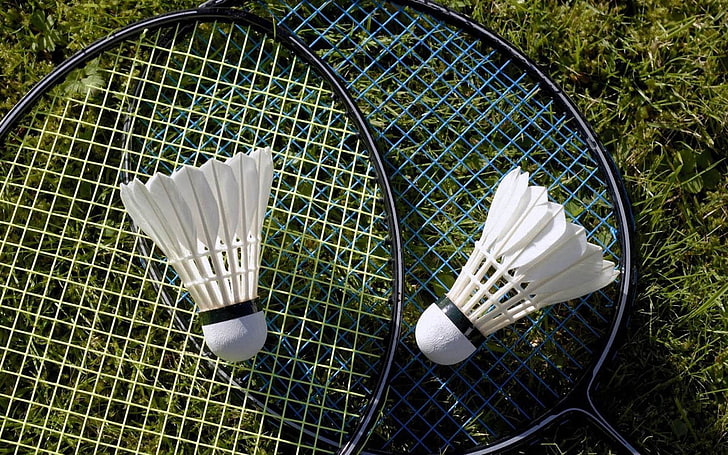Badminton, a sport that combines agility, precision, and strategy, has been captivating players and spectators alike for decades. With its roots dating back to ancient civilizations, this exhilarating game has evolved over the years to become one of the most popular racket sports in the world. Whether played competitively or casually, badminton offers a thrilling experience that tests both physical prowess and mental acuity.
At the heart of this electrifying sport are the specially designed badminton rackets. These lightweight yet resilient tools are pivotal in unleashing the power and finesse required to excel on the court. Crafted with advanced materials and innovative designs, badminton rackets are engineered to provide optimal control, speed, and accuracy. From beginners to seasoned professionals, choosing the right racket can make a significant difference in improving performance and maximizing potential.
But how does one play badminton? The rules may seem simple at first, but mastering the intricacies of the game requires time, practice, and a deep understanding of its fundamental techniques. Essentially a singles or doubles game, badminton involves two opposing sides attempting to hit a shuttlecock over a net using their rackets. The objective is to make the shuttlecock land within the opponent’s court while simultaneously preventing them from returning it. Agility, reflexes, and strategy all come into play as players engage in lightning-fast rallies, striving to outmaneuver and outwit their adversaries.
Now that we have embarked upon this thrilling journey into the realm of badminton, let us delve deeper into the world of this captivating sport. From the historical origins to the intricacies of gameplay, we will explore the nuances that contribute to transforming an ordinary badminton game into a smashing success. So, grab your rackets, lace up your sneakers, and get ready to unleash the power of badminton!
The Fundamentals of Badminton
History and Origins:
Badminton Rackets
Badminton, a popular sport enjoyed by millions around the world, traces its origins back several centuries. The modern version of badminton can be attributed to the British, who first played it in the mid-19th century. However, variations of the game can be found in ancient civilizations, such as the Greeks and the Egyptians. Over time, badminton evolved into the exciting and fast-paced sport that we know today.Equipment: Badminton Rackets

One of the essential elements of badminton is the racket. These lightweight and finely crafted instruments are a crucial extension of a player’s skill and technique. Badminton rackets are typically made of lightweight materials such as carbon fiber or graphite, ensuring maneuverability and allowing players to generate impressive power and accuracy with their shots. Choosing the right racket that suits your playing style and skill level is essential for maximizing your performance on the court.Gameplay: How to Play Badminton
Playing badminton is both exhilarating and challenging. The objective of the game is to hit the shuttlecock over the net and into your opponent’s side of the court, while ensuring it doesn’t hit the ground on your side. Badminton can be enjoyed both as a singles or doubles game, adding to its versatility and social aspect. Mastering essential techniques, such as serving, smashing, and maintaining good footwork, is crucial for achieving success on the badminton court.
Stay tuned for the next sections where we’ll dive deeper into badminton strategies, advanced techniques, and tips to enhance your gameplay.
Choosing the Right Badminton Racket
When it comes to playing badminton, one of the most crucial decisions you will make is choosing the right badminton racket. Your racket can greatly impact your playing style and overall performance on the court, so it’s important to select one that suits you best.
First and foremost, consider the weight of the racket. A heavy racket offers more power and stability, making it ideal for aggressive players who rely on strong smashes and powerful shots. On the other hand, a lighter racket allows for quicker swings and better maneuverability, which can benefit players who prefer speed and control.
Equally important is the flexibility of the racket shaft. A stiff shaft provides more control and accuracy, making it suitable for advanced players with a well-developed technique. Conversely, a flexible shaft provides more power and is better suited for beginners or players who rely on a more relaxed swing.
Lastly, consider the grip size of the racket. A grip that is too big or too small can adversely affect your performance and comfort. Make sure to choose a grip size that allows you to hold the racket firmly but comfortably, ensuring maximum control and minimizing the risk of injury.
In conclusion, selecting the right badminton racket is essential for optimal performance on the court. Take into account factors such as weight, flexibility, and grip size to find a racket that complements your playing style. With the perfect racket in hand, you’ll be well on your way to unleashing your full potential in the game of badminton.
Mastering the Techniques of Badminton
Footwork: Integral to Mastering Badminton
Proper footwork technique is essential in maximizing your performance on the badminton court. It not only enhances your agility and speed, but also allows you to anticipate your opponent’s moves effectively. Good footwork involves quick and precise movement, ensuring that you are always in the right position to make the shot. By mastering the footwork techniques such as the split-step and lateral lunge, you will gain a significant advantage over your opponents.Unleashing the Power of the Smash
The smash is one of the most powerful shots in badminton and can completely change the course of a game. To execute a perfect smash, you need to generate explosive power from your wrist and forearm, transferring it to the shuttlecock at the highest point of your jump. Timing is crucial here, as a well-timed smash can be virtually undefendable. Practicing your smash technique and incorporating it strategically into your gameplay can give you an edge over your competitors.Mastering the Net Play
Net play requires finesse and precision, and mastering it can make a significant difference in your badminton skills. The key to successful net play is to have quick reflexes, soft touch, and the ability to control the shuttlecock close to the net. By practicing net shots, drop shots, and net blocks, you can become proficient in controlling the rallies and forcing your opponents into difficult positions. A mastery of net play is essential to tactically outmaneuvering your opponents and gaining the upper hand in matches.
Remember, mastering the techniques of badminton takes dedicated practice and consistent effort. Proper footwork, powerful smashes, and skillful net play are the building blocks of achieving success in this exhilarating sport. By diligently honing your skills in these areas, you’ll be well on your way to unleashing the power of badminton and becoming a formidable player on the court.



